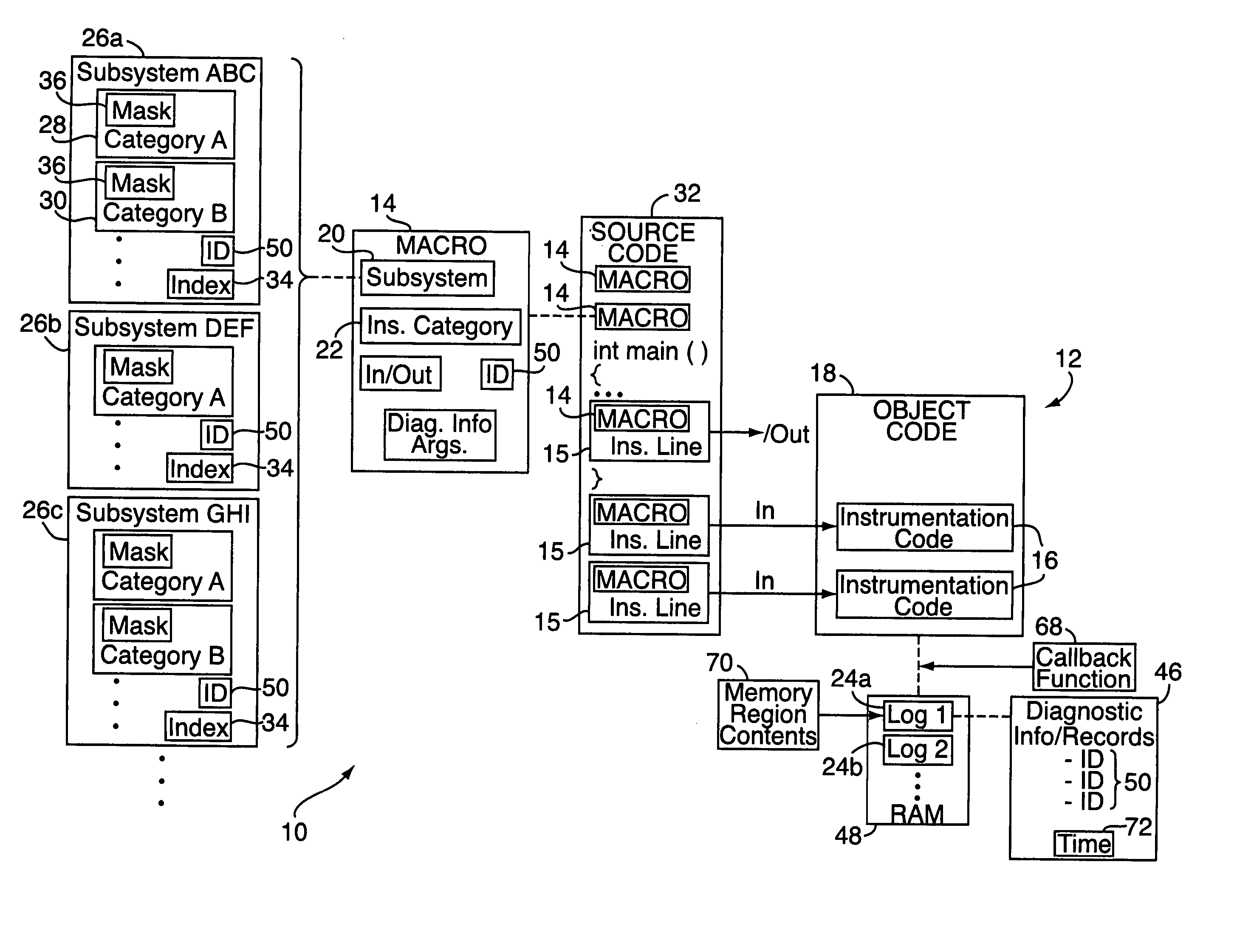Real-time software diagnostic tracing
a software and real-time technology, applied in the field of computer software, can solve the problem that the formatting is not performed while logging in real-time, and achieve the effect of reducing the overhead of instrumentation, high diagnostic information rates, and easy instrumentation
- Summary
- Abstract
- Description
- Claims
- Application Information
AI Technical Summary
Benefits of technology
Problems solved by technology
Method used
Image
Examples
Embodiment Construction
[0021] With reference to FIGS. 1-5, an embodiment of the present invention relates to a software tracing or diagnostics tool 10 for capturing diagnostic information about a software program or system 12 in real-time, and with an enhanced efficiency such that a greater rate, quantity, and quality of desired information can be captured within a given system's constraints on real-time, storage space, and interface bandwidth. The diagnostics tool 10 includes a number of instrumentation macros 14. Each macro 14 is configured to accept one or more arguments whose compile-time value(s) determines whether or not a line of software instrumentation 15 invoking a macro 14 is compiled to form a corresponding instance of instrumentation code 16 in the software object code 18.
[0022] Additionally, each macro 14 accepts one or more arguments that specify at least two values or dimensions, a subsystem 20 and an instrumentation category 22 within that subsystem. At run-time, subsets of the instances...
PUM
 Login to View More
Login to View More Abstract
Description
Claims
Application Information
 Login to View More
Login to View More - R&D
- Intellectual Property
- Life Sciences
- Materials
- Tech Scout
- Unparalleled Data Quality
- Higher Quality Content
- 60% Fewer Hallucinations
Browse by: Latest US Patents, China's latest patents, Technical Efficacy Thesaurus, Application Domain, Technology Topic, Popular Technical Reports.
© 2025 PatSnap. All rights reserved.Legal|Privacy policy|Modern Slavery Act Transparency Statement|Sitemap|About US| Contact US: help@patsnap.com



